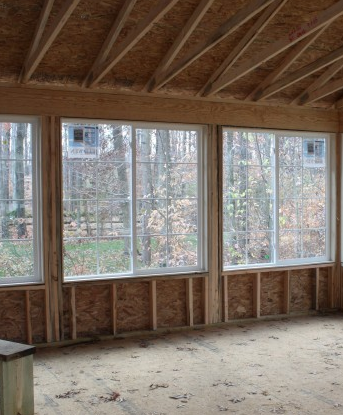
Who wouldn’t love the chance to make summer last a little longer, or to make their outdoor areas a bit more welcoming to family and friends? If your home is equipped with a carport, you can do just that. It can be surprisingly simple to turn a basic carport into an extension of your home’s living area. Not sure how to do that? We’ll walk you through the most important things to know below.
You Need to Start with a Plan
First and foremost, make sure you have a plan. Doing otherwise could mean encountering cost and time overruns. So, what should you do? The initial step in your planning should be to make sure you can actually commit to using your carport for living space during the warmer months of the year. You’ll need to make a commitment that you will park your car(s) under the carport during the colder months, and then work to transform it for the warmer months.
You will also need a plan on how you’ll set up this new living space. In many cases, carports have at least three walls opening to the outside. You’ll need to think about the following:
- How many actual walls does your carport have? Are there windows in those walls?
- If your nearest neighbor is very close, consider doing something different – new garage doors can be installed as moveable walls in the front and the rear, offering protection and privacy.
Working with an architect or designer can help you explore other ideas for transforming your carport into the ideal outdoor living area.
Creating the Right Budget
How much should you expect to spend on this particular project? Actually, it can vary a lot depending on what you’re starting with, and your ultimate goals with the carport. With that being said, you can realistically budget between $10,000 and $20,000 for the total costs of the project. You can cut costs in a number of ways, though, such as:
- Leave the existing carport flooring as is.
- Do not lay footings for a foundation, or pour concrete walls for the carport.
- No need for additional electrical wiring or new plumbing in the area.
Not entirely sure how much your particular project will cost? Here’s a handy guide to help you break things down:
40% of the amounts shown in the link we provide below go to materials only. A full 60% of those costs go to labor. Doing things yourself can help you save a great deal of cash on your project.
You can find a more in-depth explanation of materials and labor costs involved here, check this text.
Making the Most of Natural Light
If you want to save money by avoiding electrical wiring, and additional light fixtures, we have a few suggestions to help you make the most of natural light.
If your carport is wide enough, you could decide to install a nine-foot garage door in the front and rear. These can remain open to allow in light. You’ll need to make sure that the façade is at least 12 feet wide, though.
If you install garage doors, the front door could be something like Garaga’s California model – it’s made from all glass to allow plenty of light inside. You could also go with a contemporary door that offers widows around 40" x 13" (102 x 33 cm) windows.
For the rear of the carport, you will want to think about how often you will want to go from the carport into the back yard. If you anticipate a significant amount of traffic regularly, then installing a moving garage door might be the best option. However, if you don’t believe that you’ll be going back and forth all that frequently, a simple access door may be enough. If you do decide to go with two garage doors, installing them back to back is possible if the carport is at least 22 feet deep (6.7 m). This is particularly important if you decide that electric openers are needed.

If you’re on the fence about using an electric garage door opener, consider this: if you install an electric opener, you’ll need at least 48 inches (1.2 m), plus the height of the garage door. If you do not intend to go the electric route, you’ll only need the garage door height plus 28 inches (71 cm) in depth.
You can add plenty of natural light by creating a window bank in the long side wall (away from the home). The windows should be around 36 inches (90 cm), and they need to be double-paned, thermo windows.
Depending on your privacy needs and the temperature, you can open and close the garage doors to allow in more light and air. You can even choose different types of glass to improve your privacy. You’ll find clear glass, satin glass, and even gray tinted glass on the market.
Getting Started
Ready to get going? Contact us by calling 330-889-0062. We would be happy to discuss all of your options, including garage doors and garage windows. You can discuss your project on the phone, but we would also be happy to send you a quote by email, or you can drop by the showroom and speak to us in person.
If you’re looking for a bit of visual assistance, we recommend checking out our Design Centre, as well as our image gallery.








Add new comment